Results 4,691 to 4,700 of 12096
Thread: Anandtech News
-
01-25-15, 12:00 AM #4691
Anandtech: Internet Explorer Project Spartan Shows Large Performance Gains
With the release of build 9926 of Windows 10, I have had some time to get to know the new build. One of the things discussed at the Windows 10 event in Redmond was an update to the browser, codenamed Project Spartan, is a new fork of Microsoft’s browser. There will be a lot of features coming to Spartan, such as the ability to annotate web pages with digital ink or keyboard text input, a new reading experience, and Cortana integration. It will be available on all Windows 10 devices – PCs, tablets, phones, and even Xbox. Internet Explorer has never been on the fast update cycle that other browsers are on – namely Google’s Chome browser and Mozilla’s Firefox.
As a brief history, there are of course several major browsers and many smaller ones. Webkit has become one of the dominant rendering (also called layout) engines, and powers Apple’s Safari browser on both OS X and iOS. Chrome used to be based on Webkit, but in 2013, Google forked WebCore from the WebKit project and created Blink, which is also now used by the Opera browser. Firefox has their own rendering engine, called Gecko, and Internet Explorer has used a closed source rendering engine called Trident since version 4.0.
In addition to the rendering engine, each browser also has an ECMA Script engine for executing JavaScript. JavaScript has become very important on the web, so JavaScript performance of the engine is important for how fast web pages feel. Safari’s engine is branded as Nitro, Chrome has V8, Firefox has SpiderMonkey, and Internet Explorer uses Chakra. This means that even though Chrome and Safari were both based on Webkit, performance can be very different because of the different script engines in each browser.
Previous to Internet Explorer 9, IE used a script interpreter for JavaScript, which was fine back when the web was mostly static content, but not good enough with the move to dynamic webpages. Chakra was created for IE9, and it gave a large jump in performance for IE 9 over IE 8. It was certainly an improvement, but quickly fell behind in terms of performance against the other competitors. IE 10, and IE 11, both improved somewhat over the competition, but still the performance of Javascript was poor.
With Windows 10, Microsoft is finally talking about performance again, but also compatibility. For legacy sites, Spartan can load the IE 11 engine as needed, but most of the time they will be able to avoid the legacy code and use a much leaner, faster engine, along with a revamped Javascript engine which offers much greater performance.
Spartan will not be Internet Explorer. This will be a completely new browser, with a new name. Spartan will however be able to load the IE 11 engine if and when needed to maintain compatibility with older sites. For enterprises which still rely on older technologies such as ActiveX controls and Browser Helper Objects, Internet Explorer will still be available in Windows 10 for those use cases, however it will have the same dual rendering engine as Spartan, allowing modern sites to be rendered with the new rendering engine, and older sites to be rendered with IE 11.
For the Windows 10 build 9926 which was released on January 23rd, Spartan is not yet available, and will show up at a later date. However Internet Explorer does have the new Edge document mode. A small number of testers will have this mode enabled by default, and anyone who wants to test against it can manually enable it by going to about:flags in the address bar. Switch Enable Experimental Web Platform Features to Enabled, and you will be using the latest rendering engine. This is still pre-release software, so enable at your own risk of course. Also in the experimental features is the ability to set a custom user agent string, and Microsoft has continued the successful strategy that they brought forward in Windows Phone 8.1 Update 1 of having a user agent string say that it is not Internet Explorer to avoid old IE-only content.
The performance increase of the new Javascript engine is massive, and brings Internet Explorer basically up to par with Google Chome for Javascript performance. WebGL still has some work to be done, and at the moment, the only HTML5 features that have been added is WebM support. Let’s take a look at the numbers.
IE was well optimized for Sunspider already, so there is not much of a change there. Google Octane 2.0 however has always been terrible in IE, and now it comes in roughly the same as Chrome, for a massive 81.8% increase over the old rendering engine. Kraken continues this with a 45% jump in performance. It is a big change, and a welcome one too.Browser Performance - Core i7-860 Benchmark IE Old IE Experimental Chrome 40 Firefox 35 Percentage Change Sunspider 149.7 144.6 260.9 220.1 3.4% Octane 2.0 9861 17928 17474 16508 81.8% Kraken 1.1 3781.2 2077.5 1992.8 1760.4 45.1% WebXPRT 913 1083 1251 1345 18.6% Oort Online 1990 2170 5370 3900 9% HTML5Test 339 344 511 449 1.5%
Spartan should have good performance when it is eventually previewed, and hopefully the standards support will increase as well. Since it will be updated through the Windows Store, the old way of updating Internet Explorer with new Operating System releases should also disappear, allowing Microsoft to ramp up the updates to the new browser. It has taken a long time, but it seems that Redmond is finally focusing on performance and standards for a new web. For those that want to read up on more of the changes, check out the MSDN IE Blog for more information.
More...
-
01-26-15, 05:32 AM #4692
Anandtech: ASRock VisionX 471D Review - Evolutionary Upgrades for a Powerful mini-PC
ASRock has been one of the few motherboard vendors to focus on mini-PCs targeting the HTPC and portable gaming markets. Starting from the ION-based nettop days, they have consistently refreshed the mini-PC lineup in sync with Intel's product cycle. We reviewed the Haswell-based VisionX 420D last September. Instead of waiting for Broadwell / Skylake, ASRock has taken the opportunity of falling flash memory prices to bring out a mid-generation update in the form of the VisionX 471D. With a Core i7-4712MQ and a 256 GB mSATA SSD under the hood, ASRock manages to address two important improvement aspects that we noted in our VisionX 420D review. Do the additional capabilities come with any caveats? Are there tangible improvements in real-world workloads? Read on to see how the VisionX 471D fares in our mini-PC evaluation routine.
More...
-
01-26-15, 12:30 PM #4693
Anandtech: GeForce GTX 970: Correcting The Specs & Exploring Memory Allocation
Over the weekend we reported on a statement released by NVIDIA regarding recent concern over unusual VRAM allocation and VRAM bandwidth performance from the GeForce GTX 970. In brief, various GTX 970 owners had observed that the GTX 970 was prone to topping out its reported VRAM allocation at 3.5GB rather than 4GB, and that meanwhile the GTX 980 was reaching 4GB allocated in similar circumstances. All of this was at odds with what we thought we knew about the cards and the underlying GM204 GPU, as the two cards were believed to have identical memory subsystems.
As a result we’ve been digging into this issue over the weekend, working to collect the final pieces of the puzzle. To that end NVIDIA reached out to us Sunday evening to fully explain the issue at a level of detail necessary for our level of depth, making available to us a “triage team” of sorts of technical marketing, product management, and engineering/architectural personnel to answer questions and to better explain the issue. While there’s still some benchmarking left to do on our end – we’ve only had a relatively brief Sunday evening to work with NVIDIA’s full explanation – at this point we feel like we have a solid grasp of what’s going on with the GTX 970, how its memory segmenting and allocation work, and how it can impact performance.
More...
-
01-26-15, 05:31 PM #4694
Anandtech: Microsoft Q2 FY 2015 Financial Results: 8% Revenue Gain
Microsoft released their second quarter results from fiscal year 2015 today. The holiday quarter saw an 8% rise in revenue over 2014, coming in at $26.47 billion last quarter. However the cost of revenue for the quarter was up almost $2 billion, so the operating income for Q2 2015 fell 2% year-over-year to $7.776 billion, from $7.969 billion a year ago. Net income fell to $5.863 billion, with an increase in total taxes paid due to an IRS audit adjustment, and restructuring expenses which totaled $243 million. Earnings per share was down 9% to $0.71, meeting analysts’ expectations for the quarter, and $4.5 billion was returned to shareholders for Q2.
Breaking down the business, Microsoft has two main segments. Devices and Consumer (D&C) is the business line that focuses on hardware and software aimed at the consumer, and Commercial is the segment aimed at business and enterprise needs. Looking at D&C, it is further broken down into licensing, which includes Windows Phone licensing, Windows OS licensing, and traditional Office sales. Computing and Gaming Hardware is Xbox and Surface lines, Phone Hardware is the new Smartphone business purchased from Nokia last year, and D&C Other includes First-Party games, Xbox Live revenues, Online Advertising, and Office 365 Home, Personal, and Student revenues.
Taking a look at D&C Licensing, revenue is down 25% to $4.17 billion, with a gross margin down 22% to $3.88 billion. Both are slightly higher than Q1 2015, but there have been some major changes to Microsoft’s licensing models which directly impact this segment. Windows Phone licensing revenue fell 61% year-over-year, mostly due to the fact that Nokia is no longer paying them for the OS since they have been acquired by Microsoft. In addition, Windows Phone has been moved to no cost licensing. Windows OEM revenue also declined 13%, which Microsoft attributes to a return of the business PC and Pro market returning to a pre-Windows XP end of support level, as well as new lower-priced licensing for devices sold to education institutes. Non-Pro revenue declined 13% due to low price point devices and the new licensing model for low cost products. To cap off the D&C Licensing segment, Office Consumer revenue declined 25% due to the move of users to the subscription based Office 365.Microsoft Q2 2015 Financial Results (GAAP) Q2'2015 Q1'2015 Q2'2014 Revenue (in Billions USD) $26.470 $23.201 $24.519 Operating Income (in Billions USD) $7.776 $5.844 $7.969 Gross Margin (in Billions USD) $16.334 $14.928 $16.197 Net Income (in Billions USD) $5.863 $4.540 $6.558 Margins 61.7% 64.3% 66.1% Basic Earnings per Share (in USD) $0.71 $0.55 $0.79
Computing and Gaming Hardware had an 11% year-over-year drop in revenue, down to $4 billion. Gross margin is much lower for hardware, but it did show a 12% gain over 2014, to $460 million. Xbox saw a 20% decline in revenue, however price promotions did drive strong Xbox One sales for the holidays. Xbox 360 sales declined. Surface on the other hand had revenue of $1.1 billion, up 24%, which was driven by Surface Pro 3 and accessories sales. Xbox had a gross margin decline, due to the higher platform costs of Xbox One over Xbox 360 at this point in the product lifecycle, and Surface Pro 3 drove a gross margin improvement.
Moving to phones, Microsoft cracked the 10 million smartphones per quarter number, with 10.5 million Lumias sold, which was up both year-over-year and quarter-over-quarter. The growth has been driven by low cost smartphones, which helps explain the myriad of low-cost devices announced in the past year. Almost 40 million non-Lumia phones were sold, declining over the previous year as the feature phone market dries up. Overall revenue for the quarter was $2.28 billion, with a gross margin of $330 million, or 14%.
The final D&C segment is “Other”, and this division saw a strong gain, with a 30% increase in revenue over last year, up to $2.44 billion. Gross margin was up 42% as well, to $550 million. First-party games had a strong quarter, with revenue up 79%, driven by Minecraft, Halo, and Forza franchises. Xbox Live had revenues up 42%, which is attributed to higher Xbox Live transactions. Online Advertising had search revenue up 23%, due to higher revenue per search and increase search volume, but display advertising revenue declined. The Bing search engine has 19.7% US market share, up 150 basis points over last year. Office 365 continues its strong growth, with 30% more customers than just last quarter. The total number of Office 365 subscribers is now at 9.2 million.
The Commercial segments are next, with this broken into Licensing and Other, with Licensing including volume licensing, Windows Server, and Office, and Other is the cloud based services (and needs to be renamed). Total revenue for commercial grew 5% to $13.27 billion, with the gross margin coming in at a 3% gain to $10.83 billion. Licensing revenue was down slightly to $10.68 billion, a drop of 2% over last year. This was due to a 13% drop in Office commercial sales, a 7% increase in Server product revenue, and a 3% gain in Windows volume licensing. Other revenue was up 46% to $2.59 billion, with Commercial Cloud growing 114% driven by strong sales of Office 365 Business, Azure, and Dynamics CRM Online.
Commerical is where Microsoft makes its money, with about 66% of their gross margin coming from the commercial segments. Microsoft is well established in the enterprise, and has been very successful at moving those customers to its cloud offerings. Office 365 has been very successful, and they have just announced the Office 365 Government cloud as well with special requirements that will appease that market.Microsoft Q2 2015 Segment Overview (in Billions USD) Q2'2015 Q1'2015 Q2'2014 Percentage for quarter D&C Licensing Revenue $4.17 $4.09 $5.54 15.8% D&C Licensing Gross Margin $3.88 $3.82 $4.98 23.8% D&C Computing and Gaming Hardware Revenue $4.00 $2.45 $4.47 15.1% D&C Computing and Gaming Hardware Gross Margin $0.46 $0.48 $0.41 2.8% Phone Hardware Revenue $2.28 $2.61 $1.98 8.6% Phone Hardware Gross Margin $0.33 $0.48 $0.05 2.0% D&C Other Revenue $2.44 $1.81 $1.87 9.2% D&C Other Gross Margin $0.55 $0.31 $0.39 3.4% Commercial Licensing Revenue $10.68 $9.87 $10.90 40.3% Commercial Other Revenue $2.59 $2.41 $1.77 9.8% Commercial Overall Gross Margin $10.83 $9.91 $10.50 66.3%
All of the D&C segments have quite low margins except for their Licensing segment, but it saw a sharp decline. Continues price pressure on the operating system has changed the way Windows is licensed, and Microsoft needs to move people to its cloud services to keep the margins up. This has been successful with Office 365, which has gained quite a few subscribers every quarter. To see a 30% gain in just one quarter, at this stage in its life, is pretty strong growth.
On the hardware side, Xbox One has slimmer margins at this point in its life than Xbox 360, driving down gross margin. The 20% decline in revenue was pretty sharp, but last year’s holiday numbers included the initial launch, which had a spike in sales that have not been seen since. Price cuts to the Xbox One have helped sales, but will further cut into the slimmer margins. Surface is a bright spot though, especially after the Surface RT write-down which caused many people to wonder if Microsoft was going to stick with hardware. The Surface Pro 3 can, I think, be called a success, after several iterations that were good devices, but not fantastic. It has had several quarters of strong growth now.
Microsoft missed a couple of analysts’ expectations, with a smaller Unearned revenue and slow sales in China and Japan. They are seeing strong gains in their cloud infrastructure, and have had some success in hardware.
Source: Microsoft Investor Relations
More...
-
01-27-15, 07:30 AM #4695
Anandtech: Transcend SSD370 (128GB, 256GB & 512GB) Review
We got the first glimpse of Transcend's SSD370 at Computex last year and now the drive has been in retail for quite some time. The interesting bit about the drive is its custom Transcend firmware, which is accompanied by a relabeled Silicon Motion SM2246EN controller (Transcend calls it TS6500). The SM2246EN has increasingly been gaining popularity among SSD vendors, but the SSD370 is the first time I've come across a custom firmware solution. Read on to see how the SSD370 and Transcend custom firmware perform in our tests!
More...
-
01-27-15, 08:30 AM #4696
Anandtech: Dell Updates Ultrabook Thin M3800 Mobile Workstation With 4K Display
Today Dell is taking the wraps off of an updated version of the M3800 mobile workstation which first launched in November 2013. This is the first thin and light mobile workstation, with a thickness of just 0.31” - 0.71” (8 mm – 18 mm) and a much lighter weight than other mobile workstations at that time. The 15.6” model has a starting weight of just 4.15 lbs, or 1.88 kg. That’s not light compared to an ultrabook, but it is in good company for other devices with a full quad-core CPU and a Quadro GPU onboard. Dell has tweaked the design, added new features, and responded to customer feedback about the device, as well as potential customer input.
The heart of what is powering this mobile workstation has not changed. Broadwell quad-core CPUs are not available yet, so the M3800 sticks with the Haswell Core i7-4712HQ processor, which is a four-core eight-thread CPU with a 2.3 GHz base and 3.3 GHz turbo speed. The 37 watt CPU includes Intel HD 4600 graphics, which is supplemented by the NVIDIA Quadro K1100M with 384 CUDA cores and 2 GB GDDR5 memory. This is a Kepler GPU, based on GK107, and has a maximum TGP of 45 watts Available memory is two slots with 16 GB of DDR3L So the processing power has not changed, so let’s take a look at what has changed.
The first obvious change is to the display. The M3800 was previously available with a QHD+ 3200x1800 IGZO panel, and now Dell has bumped that up to a 4K 3840x2160 IGZO2 model. This bumps the density up to 282 pixels per inch, and the IGZO2 panel should help with the power draw of the panel. Dell is claiming over 100% sRGB color gamut, and 72% of the Adobe RGB gamut with this display. Dell said they have worked hard with their third party software vendors to ensure a quality experience with a high DPI panel, and workstation class software suites like Adobe Creative Cloud do support High DPI now. Dell will also be offering a 1920x1080 panel, which should be a bit less expensive. Both displays come with 10-point multitouch, and Corning Gorilla Glass NBT.
Dell also solicited feedback from potential customers, and in response to requests from shops that want to move from Apple Retina MacBook Pros, they have added a Thunderbolt 2 port to the new model. This will allow customers who have invested in the Thunderbolt ecosystem to more easily switch, since they will not have to reinvest in accessories such as storage and displays. The Thunderbolt 2 port also doubles as a mini-DisplayPort. The other notable I/O change is that the new model will ship with a USB 3.0 Ethernet dongle versus the USB 2.0 version shipping with the previous generation M3800.
Storage options are also new for this model. Dell also got a lot of feedback about storage options, and they are now offering a 1 TB mSATA SSD in addition to the second 2.5” hard drive bay which can also be outfitted with a 1 TB SSD, for a total of 2 TB of solid state storage. Also, in response to customer demand, Intel SSDs are now available. In addition, traditional hard drives and hybrid hard drives are also optional.
Dell is making a clear play at the Retina MacBook Pro. They commissioned Principle Technologies to perform independent tests versus the rMBP. Using Adobe Premiere Pro CC, the M3800 was up to 30% faster at rendering a video sequence, and 26% faster at transcoding. Also, the M3800 stayed cooler, with a surface temperature difference of 24.1° F on the top, and 5.9° F on the bottom. The inclusion of the Thunderbolt 2 port is also an important addition if they want to move clients over, since the cost of accessories can be much higher than the laptop itself especially in the 4K video field.Dell M3800 Mobile Workstation Processor Intel 4th Generation Core i7-4712HQ
Four-core Eight-Thread 2.3 GHz Base 3.3 GHz Burst
6 MB Smart Cache 64-bit 37 W TDPMemory up to 16 GB DDR3L-1600 Graphics Intel HD Graphics 4600
20 EUs at 400-1150 MHz
NVIDIA Quadro K1100M
Kepler GK107 384 CUDA Cores 2GB GDDR5Display 15.6" UHD 3840x2160 IGZO2 10 point touch
15.6" FHD 1920x1080 10 point touchStorage mSATA plus 2.5" bay
128GB, 256GB, 512GB, 1TB mSATA
500GB, 1TB 5400rpm HDD
500GB/8GB Hybrid HDD
256GB, 512GB, 1TB 2.5" SSDOptical Drive N/A Networking USB 3.0 Ethernet Dongle
Intel Dual Band Wireless-AC 7260 w/BT 4.0 2x2:2
Dell Wireless 1560 2x2:2 802.11acAudio Dual integrated high quality speakers
Dual integrated noise cancelling digital array microphones
Waves MaxxAudio® Pro suiteBattery/Power 6 cell 61 Wh
6 cell 91 Wh
130W Max AC AdapterLeft Side HDMI
Thunderbolt 2.0/mDP Combo Port
USB 3.0 with Powershare
Headset Jack
Battery Life IndicatorRight Side 3-in-1 Card Reader
USB 2.0 with PowerShare
USB 3.0 with PowerShareOperating System Ubuntu 14.14 LTS
Windows 7 Professional 64-bit
Windows 8.1 Pro 64-bitDimensions 14.65" x 10" x 0.31-0.78" (WxDxH)
372 mm x 254 mm x 8-18 mmWeight Starting at 4.15 lbs / 1.88 kg Extras 720p HD Webcam
Backlit Keyboard
Precision touchpad, seamless glass integrated buttonPricing $1699 Starting Price
Another area where Dell is trying to gain share is with the Linux developer. Dell offers the XPS 13 Developer Edition laptop, and the M3800 will be joining the smaller laptop with an Ubuntu edition as well. This is in response to direct feedback from the developer community, who wanted something with a bit more power than the Ultrabook class XPS 13.
This is no ultrabook, even though it appears to wear that clothing. Dell developed the first mobile workstation in 2001, and for someone who needs that kind of power in a more mobile package, they now offer this updated M3800 to fit that niche. The new M3800 is on sale today, starting at $1699.
Source: Dell
More...
-
01-27-15, 02:01 PM #4697
Anandtech: Apple Releases iOS 8.1.3 With Bug Fixes and Reduced Storage Requirements
Today Apple sent out the newest version of iOS to all devices capable of running versions of iOS 8. This update brings iOS to version 8.1.3, and like the 8.1.2 patch before it, this update is aimed at squashing bugs that still remain after the major iOS 8.0 and 8.1 updates from last year. Apple's changelog for the update is below, although there are often small bug fixes that don't get put on the list of changes.
- Reduces the amount of storage required to perform a software update
- Fixes an issue that prevented some users from entering their Apple ID password for Messages and FaceTime
- Addresses an issue that caused Spotlight to stop displaying app results
- Fixed an issue which prevented multitasking gestures from working on iPad
- Adds new configuation options for education standardized testing
As you can see, the number of changes isn't massive. However, users with 8GB and 16GB devices will definitely appreciate the reduced storage requirements for updating to iOS 8. The OTA version of the update had previously required users to have 5GB free on their devices, which was almost impossible for users with 8GB devices to accomplish. Apple has not quantified how much they have reduced these requirements, so we'll have to wait for reports from users who are still on iOS 7 before we know how much Apple was able to reduce the storage required. The fix for multitasking gestures on the iPad is long overdue, and it's something I've been experiencing on my iPad since iOS 8 launched. One fix that doesn't seem to be included is one for the audio drop outs that some Apple users are still experiencing with Bluetooth headphones and speakers.
In addition to bug fixes, iOS 8.1.3 includes a number of security improvements which can be viewed in detail on Apple's security page for the update.
The update weighs in at around 250MB and it's rolling out now. As stated earlier, it's available on any Apple device that can run iOS 8, which includes any device with an A5 processor or newer.
More...
-
01-27-15, 03:00 PM #4698
Anandtech: Interview with OCZ's CEO Ralph Schmitt: The New Tides of OCZ
At CES I had the opportunity to sit down with Ralph Schmitt, OCZ's CEO, for a good hour to discuss the state of the company. Before we get to the actual interview, let me introduce Mr. Schmitt. Mr. Schmitt has been OCZ's CEO since October 2011, and prior to that he was actually an OCZ board member while he was the President and CEO of PLX Technology. Mr. Schmitt has had an honorable career in addition to OCZ and PLX Technology, as he has served in several CEO and high-level executive roles in various semiconductor companies such as Cypress and Sipex. Academically, Mr. Schmitt holds a B.S. of Electrical Engineering from Rutgers University.
Discussing OCZ's History & Background in Brief
OCZ has gone through a lot in the past couple of years. In November 2013 OCZ filed for bankruptcy, and shortly after Toshiba announced that it will be acquiring OCZ's assets for $35 million. Since then OCZ has been operating as an independent subsidiary under Toshiba. Unlike what usually happens after acquisitions, OCZ has not been integrated to Toshiba's existing units and all of OCZ's different units (such as marketing, product development etc.) have remained in tact (for what it's worth, I'm still working with the same people as I was before the acquisition). The OCZ-Toshiba relationship resembles more like a strategic partnership to be honest as that indicates how separate the two are, but only in a good way.
The reason why Toshiba wanted to keep OCZ independent was to ensure that the company's talent doesn't get buried into Toshiba's massive organization. The common issue in acquisitions is that the acquiring company may not be able to use all the talent and resources of the acquired company because the culture of each organization can differ. In the end, individual talent isn't just something concrete and absolute like money that can easily be transferred from one place to another -- there are various environmental and cultural factors that go into it. For example, a change from liberal and relaxed culture to more tightly managed one can suppress some individuals because the way they work has to change, and the new way may not suit them. It is always a major challenge to integrate two companies with different organization cultures, so keeping the two separate is not always a bad idea.
One element of the equation for OCZ is due to some management changes in September 2012 when Ryan Petersen, the founder and CEO at that time, resigned. However, companies are very much like cargo ships: once you get them moving to a specific direction, it won't be easy to change that, or at least it will take time and effort to do so. Even if you know that you are on your way to run aground, it may be too late to change the course and some negative results happen.
That's essentially what happened with OCZ. Even though Mr. Schmitt stepped in as the CEO only a month after Mr. Petersen had left and started to change the course of the company for the better (less products, more emphasis on development and validation), it was too late. There was financial trouble and they had to rely on borrowed capital to keep the company running, which came in at a high cost given that their credit rating was not a top grade. So while OCZ had been heading towards the right direction for a year, the company ran out of capital in late November 2013.
Fortunately, Toshiba saw eye-to-eye with OCZ's new path and Mr. Schmitt just wasn't given enough time and resources to fulfill the potential. As a result, Toshiba decided to let OCZ continue its business and R&D as a separate unit by providing financial support for the company. The new OCZ had, and still has, a sustainable business plan, so there was no reason to break up the company into pieces.
The Symbiotic Partnership
Mr Schmitt explained how the partnership between OCZ and Toshiba extends far beyond financial support. As part of the Toshiba Group, OCZ is now able to leverage a number of Toshiba’s labs and run much more extensive testing throughout the design cycle, as well as do more specialized testing and validation to meet specific customer requirements. During the baby steps of the acquisition, the companies had a few different philosophies when it came to validation, which makes sense given the different backgrounds. For instance, Toshiba might focus more on the NAND during testing/validation (Toshiba is the inventor and major supplier of NAND, after all), whereas OCZ would focus on other aspects they could impact like the controller and firmware first.
The companies have then aligned their philosophies to use the same thinking during product development and testing. Toshiba holds OCZ drives to the same quality standards as its own and OCZ has adopted many of Toshiba's processes for its quality control. The testing/validation aspect is just one example of how the two companies are supplementing each other. The key here is that both companies have and are still learning from each other to ensure that both companies are putting out the best possible products.
The one major advantage OCZ has gained is access to Toshiba's NAND knowhow. At the high level NAND is a fairly simple semiconductor (you apply a high voltage that creates an electric field that forces electrons to tunnel from the channel through the silicon oxide to the floating gate), but once you get down to the atomic level it becomes a highly complex piece of technology. Some of OCZ's engineers have been living in Japan since the acquisition and just learning things about NAND and its characteristics to help build better products. In this case, especially endurance tweaks that require a very deep understanding of NAND, so having access to that knowledge and applying it to product design will provide OCZ with a very important advantage in the market.
Another crucial element that Toshiba provides is the access to its NAND supply. In the past OCZ had to source NAND from the open market, which resulted in varying quality NAND being used. Like many components (and goods/stocks in general), NAND is sold on spot market where anyone can sell or buy NAND. In case a NAND manufacturer (or any company) has excess stock, they can dump a portion of that into the spot market and sell it at the day's price. It is possible to buy NAND straight from the manufacturer, but the required volume tends to be fairly high and in turn you don't get the benefits of the dynamic spot market (predicting supply/demand and the associated price changes can be very profitable, if successful).
Since OCZ sourced most of its NAND from the spot market, the quality wasn't always top notch. Especially during times of low supply, OCZ basically had to use any and all NAND it got its hands into. As NAND is such a vital element of an SSD, the lower quality NAND also had an impact on overall quality and in worst cases on customer satisfaction as well.
Now that OCZ has access to Toshiba's NAND, that is no longer a concern. Not only is OCZ getting a steady supply of NAND from Toshiba, it also has access to the latest and highest quality chips. It is not a secret that all NAND manufacturers cherry-pick NAND and use the best dies for their own drives, which is why the best quality chips don't even end up on the open market.
The companies have also gone through the process of unifying product roadmaps. Initially, there was quite a bit of overlap because both had their own lineups and tried to cover as much of the market as possible, but by mid-2015 there should no longer be any major product overlaps. For instance, OCZ has stopped all SAS development as Toshiba has more expertise in that field and the same goes for certain OEM drives where Toshiba has always had a strong presence. At the same time, Toshiba will let OCZ handle the OCZ branded retail sales and on the enterprise side OCZ's focus will be in SATA and PCIe drives. The idea and goal is to supplement each other's lineup, not to compete.
Aside from high-level roadmap comparison, there is cooperation in individual products too. For a TLC NAND based SSD, the companies decided that it's better to let Toshiba handle the development of that drive because the company has been developing one for quite some time now and building a competitive TLC SSD requires a hefty amount of NAND knowledge, which is Toshiba's area of strength. It simply makes sense to focus all resources on one platform instead of having OCZ and Toshiba both spend money on a design that ultimately has the same end goal. However, for the first time, the Toshiba-built TLC drive will also retail under OCZ brand, which makes sense as OCZ already has a widespread distribution network and the required support for retail sales. On the other hand, Toshiba is very interested in OCZ's upcoming JetExpress controller, so I wouldn't be surprised to see Toshiba branded SSDs with the JetExpress controller for OEMs.
Answering My Concerns
In addition to talking about the Toshiba relationship and direction of the company, we also discussed some of the criticism I have had over the past year on the product side. While OCZ has done a good job of cleaning its product portfolio from redundant elements, I'm still of the opinion that there is some redundancy and unnecessary overlap. The case in point is the overlap between Barefoot 3 based drives because right now OCZ is selling four different drives: ARC 100, Vertex 460, Vertex 460A and Vector 150 (although the Vertex 460A will be replacing the 460 as it's just a change to A19nm NAND). That increases to five if you count the AMD branded R7. In any case, there is three OCZ branded Barefoot 3 drives and out of these three the ARC 100 and Vertex 460(A) are very much alike. In terms of performance the difference between the two is marginal and feature wise the Vertex 460 adds Acronis' cloning software and a 3.5" desktop bracket.
I have been bugging OCZ about the similarity of the two for a while now and saying that it just adds unwanted clutter to the lineup. During the meeting, Mr. Schmitt shared that OCZ decided to keep the Vertex 460 lineup around because it's very popular in certain regions (e.g. countries within EMEA and Eastern Europe) because of the Vertex brand that has been around for so long (remember, not all buyers are as well educated as our readers). On the other hand, OCZ didn't want to "downgrade" the Vertex brand to become a value brand and decided to create a new ARC series for that purpose.
After hearing the explanation, it all makes more sense now. I can't say I am vouching for the existence of the Vertex 460(A) as from a reviewer's point of view it adds little to no value to the end user over the ARC 100, but from the business perspective I can understand why OCZ was so keen on keeping the lineup around even at the cost of fragmentation and clutter.
The Software Side of OCZ
Last but not least, for the past months OCZ has been working on an updated SSD toolbox. OCZ has offered a toolbox for its SSDs for years now, but the user interface has been rather awkward and the features lacking compared to what the competitors have. The new toolbox software is set to be released in the next couple of months and it will carry a refreshed, more user friendly UI along with the fairly common set of features (manual TRIM, over-provisioning, etc.).
It's a no-brainer move in my opinion because the importance of software has been on an increase lately. SATA 6Gbps has put a limit on performance differentiation (although PCIe will reopen those doors), so consumers have started to look for additional features and value, which software is an essential part of.
Final Words
The OCZ of today is very different from yesterday's OCZ. The management has changed the course to a sustainable path where focus is on long-term development and proper validation. The Toshiba partnership just further emphasizes the quality aspect and also gives OCZ the much needed NAND supply and knowledge access.
All in all, OCZ from the outside perspective feels to be on the right path. The product roadmap, and especially the new JetExpress PCIe controller, looks very promising and I hope the potential ends up being well executed. Earning back the consumers' trust, including those that received an unreliable drive in the past, will take time. But from our side of the fence the new OCZ has been injected with a new attitude and more resources when it comes to testing and validation. We will actually touch that subject more closely over the next couple of months with an in-depth look at OCZ's manufacturing and validation processes, so stay tuned!
More...
-
01-27-15, 06:30 PM #4699
Anandtech: Apple Announces April Ship Date for Apple Watch
Today Apple announced their earnings and sales for the holiday quarter of 2014. The company sold 74.5 million iPhones, and strong earnings which were fueled by the newly released iPhone 6 and 6 Plus. While the information about Apple's financial situation is interesting for investors and analysts, it's really of no consequence to general consumers. However, Apple CEO Tim Cook made a statement during today's earnings call that is of great significance to anyone interested in Apple's upcoming smartwatch, the Apple Watch.
Like the iPhone, the Apple watch was announced several months prior to its shipping date. Until today, the only information about when Apple Watch would be available was that it was coming in early 2015. While there's still no specific launch date, Cook stated that the development for the Apple Watch was proceeding according to schedule, and that the company expected to begin shipping it in April. Unfortunately, concrete information about the price and battery life of Apple Watch is still unknown, and it will be interesting to see if more details get confirmed in the upcoming weeks and months as we get closer to April.
Source: Apple via Macrumors
More...
-
01-27-15, 09:30 PM #4700
Anandtech: Apple Q1 FY 2015 Financial Results: Record iPhone Sales Drive Record Earni
Apple announced its earnings today for their first quarter of fiscal year 2015, with the quarter ending on December 27th 2014. This was a huge quarter for them, with new iPads, iMac coming to market, and of course the iPhone which launched right at the tail end of their last quarter. New products plus the busy holiday season gave Apple its highest quarterly results ever, with a staggering $74.6 billion in revenue, and a net profit of $18 billion. That is a 29.5% growth in revenue year-over-year, and a 37.4% increase in net profit. Gross margin was up 2% to 39.9% as compared to Q1 2014, and earnings per share came in at $3.08, which was much higher than analysts’ expectations.
The story of Apple is the iPhone, which was updated in September with two new models with larger displays. Clearly the market wanted this, even if our own Ryan Smith still swears by his smaller iPhone 5 display. Sales of the iPhone for Q1 totaled 74.5 million units, with over $51 billion in revenue. Compared to Q4 2014, when the iPhone 6 and 6+ had just launched, that is a 90% increase in sales sequentially. The holiday quarter is always strong, but even year-over-year the increase in units was up 46%, with revenue up 57%. Average Selling Price (ASP) for this quarter’s iPhones was $687.30, which is up significantly over last quarter’s ASP of $602.92 and last year’s $636.90. Clearly there was quite a bit of pent up demand for a larger iPhone.Apple Q1 2015 Financial Results (GAAP) Q1'2015 Q4'2014 Q1'2014 Revenue (in Billions USD) $74.599 $42.123 $57.594 Operating Income (in Billions USD) $24.246 $11.165 $17.463 Gross Margin (in Billions USD) $29.741 $16.009 $21.846 Net Income (in Billions USD) $18.024 $8.467 $13.072 Margins 39.9% 38.0% 37.9% Earnings per Share (in USD) $3.08 $1.43 $2.08
Next up from Apple is iPad sales, which struggled over the last year. Last quarter, the Mac overtook iPad for revenue. The new iPad did reverse that trend, with a 74% increase in units sold since the last quarter. 21.4 million iPads were sold in Q1, with revenue coming in at $8.985 billion, which works out to a ASP of $419.49. While this was a big jump from last quarter, it was still down 18% year-over-year, and revenue was down 22% from Q1 2014. Sales are still good, but iPad sales have not followed iPhone sales with large growth with each new model.Apple Q1 2015 Device Sales (thousands) Q1'2015 Q4'2014 Q1'2014 Seq Change Year/Year Change iPhone 74,468 39,272 51,025 +90% +46% iPad 21,419 12,316 26,035 +74% -18% Mac 5,519 5,520 4,837 0% +14%
The Mac had another good quarter, with a 14% increase in units sold year-over-year. Apple sold 5.5 million Macs in Q1, which was about the same as they sold in Q4 2014, but the ASP was up slightly which resulted in a 5% gain in revenue since last quarter. Year-over-year revenue was up 9%. These are great numbers, especially when the PC market as a whole has been pretty much flat for the year, and Apple has not really updated the Mac in the last couple of quarters other than the new 5K iMac.
Apple’s iTunes, App Store, Mac App Store, iBooks, AppleCare, Apple Pay, and licensing fall into their Services segment, and this business line had modest growth of 4% quarter-over-quarter and 9% year-over-year, with it now pulling in almost $4.8 billion per quarter.
Other Products is the final category, and it includes iPod, Apple TV, Beats, and accessories. The lowly iPod, which vaulted Apple up through the 2000’s, no longer is broken down by units sold. The Other Products category had a 42% sequential increase in revenue, and a 5% loss in revenue as compared to Q1 2014, with $2.689 billion this quarter.
Right now, the iPhone is Apple. It accounts for 68.6% of the company’s revenue for this quarter, and iPhone revenue alone is about the same as Microsoft ($26.47B), Google ($16.52B), and Intel ($14.72B) combined. This has allowed Apple to return $57 billion to shareholders over the last twelve months, and they have declared a dividend of $0.47 per share, payable on February 12th. Looking forward, Apple is expecting revenue between $52 and 55 billion, and gross margin between 38.5% and 39.5% for the next quarter.Apple Q1 2015 Revenue by Product (billions) Q1'2015 Q4'2014 Q1'2014 Revenue for current quarter iPhone $51.182 $23.678 $32.498 68.6% iPad $8.985 $5.316 $11.468 12.1% Mac $6.944 $6.625 $6.395 9.3% iTunes/Software/Services $4.799 $4.608 $4.397 6.4% Other Products $2.689 $1.896 $2.836 3.6%
Source: Apple Investor Relations
More...
Thread Information
Users Browsing this Thread
There are currently 12 users browsing this thread. (0 members and 12 guests)






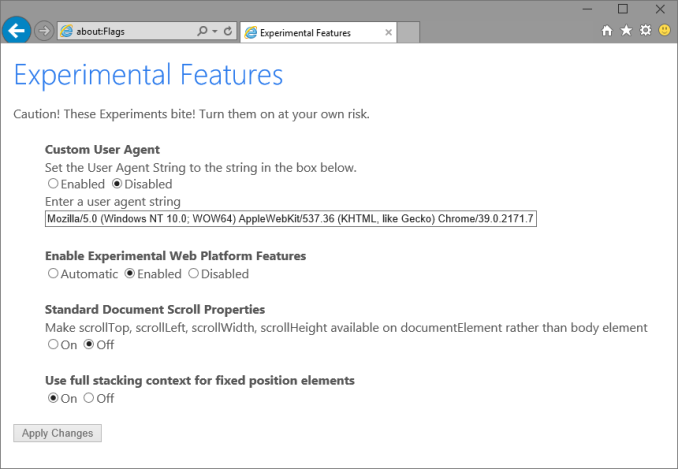

 Quote
Quote
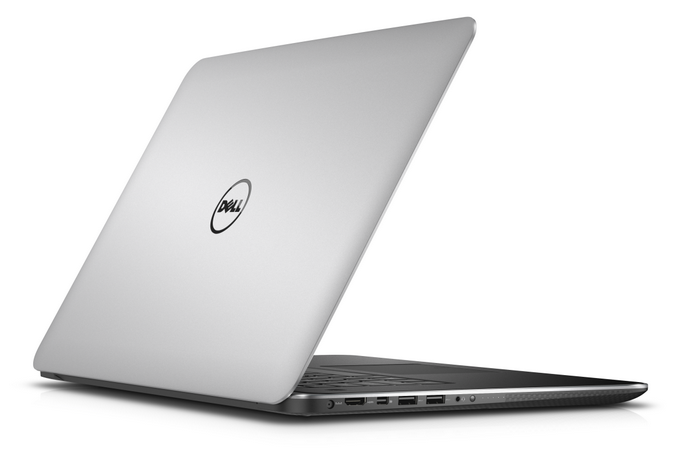


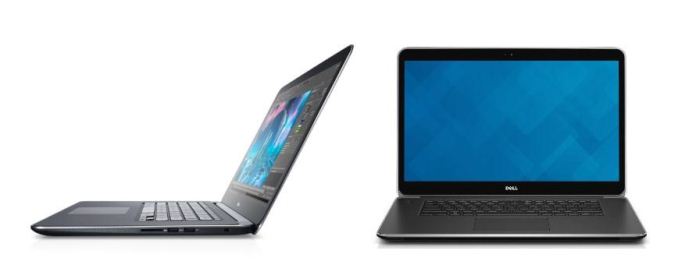
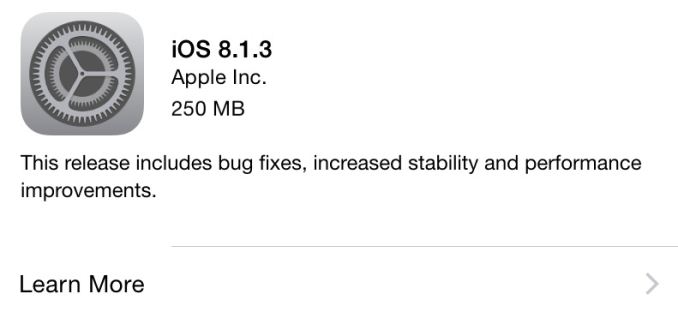
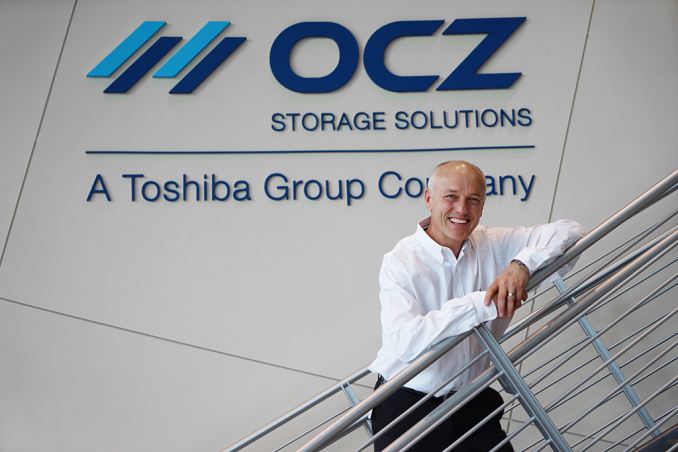
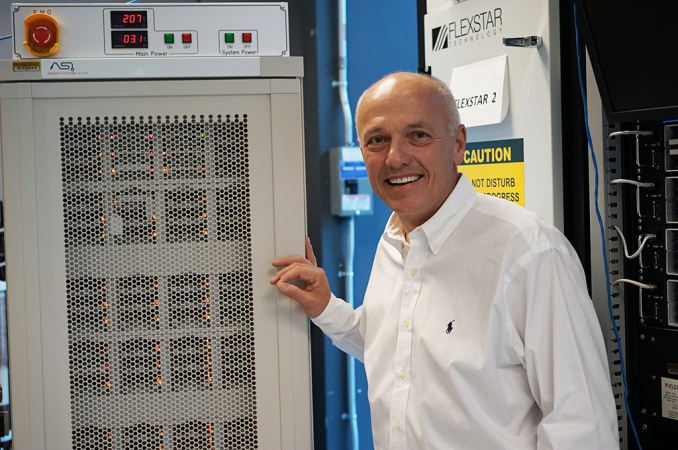
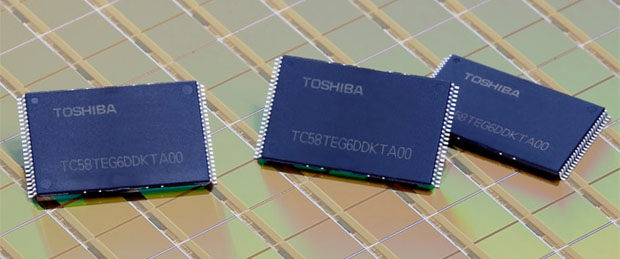

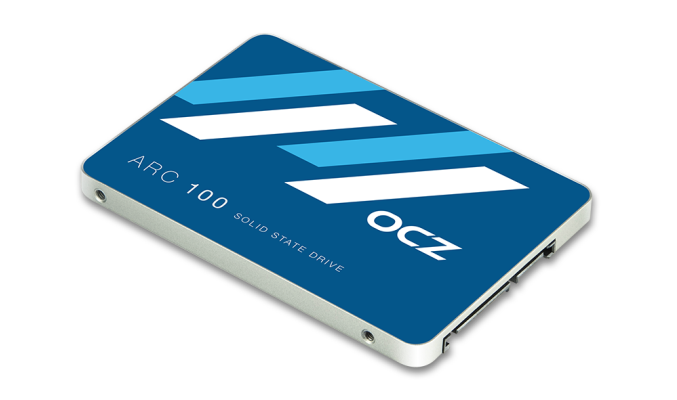


















Bookmarks